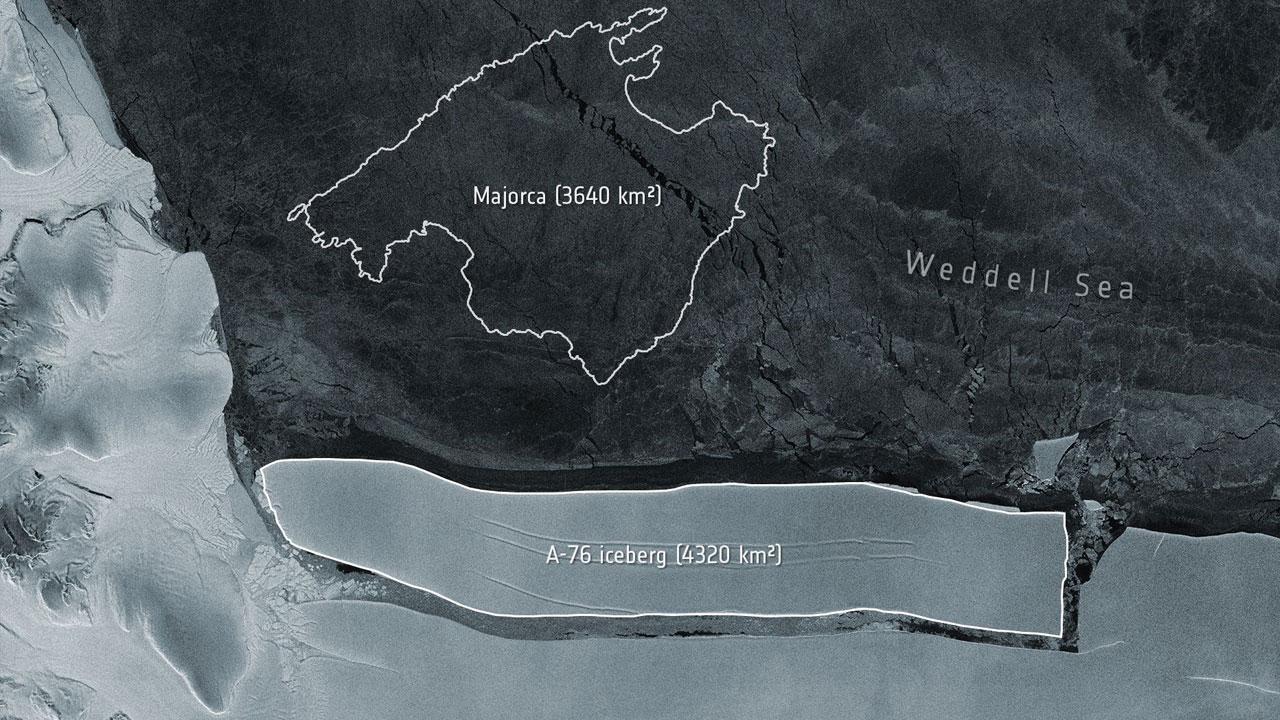The iceberg, dubbed A-76, measures around 4320 sq km in size - currently making it the largest berg in the world, reported European Space Agency (ESA)

This handout image released by The European Space Agency (ESA) on May 20, 2021, shows a view captured by the Copernicus Sentinel-1 mission of the A-76 iceberg off the Ronne Ice Shelf, in the Weddell Sea, Antarctica taken on March 9, 2021. Photo: AFP
An enormous iceberg has calved from the western side of the Ronne Ice Shelf, lying in the Weddell Sea, in Antarctica.
ADVERTISEMENT
The iceberg, dubbed A-76, measures around 4320 sq km in size - currently making it the largest berg in the world, reported European Space Agency (ESA).
The newly calved berg was spotted in recent satellite images captured by the Copernicus Sentinel-1 mission.
The iceberg is around 170 km in length and 25 km wide, and is slightly larger than the Spanish island of Majorca, said the ESA in a statement posted on its website with a photo of the enormous, oblong ice sheet.
By comparison, Spain's tourist island of Majorca in the Mediterranean occupies 3,640 square km.
The enormity of the berg makes it the largest in the world, snatching first place from the A-23A iceberg (approximately 3880 sq km in size) which is also located in the Weddell Sea.
In comparison, the A-74 iceberg that broke off the Brunt Ice Shelf in February earlier this year, was only 1270 sq km, reported ESA.
The iceberg was spotted by the British Antarctic Survey and confirmed from the US National Ice Center using Copernicus Sentinel-1 imagery.
The Sentinel-1 mission consists of two polar-orbiting satellites that rely on C-band synthetic aperture radar imaging, returning data regardless of whether it is day or night, allowing ESA year-round viewing of remote regions like Antarctica.
Icebergs are traditionally named from the Antarctic quadrant in which they were originally sighted, then a sequential number, then, if the iceberg breaks, a sequential letter.
Some ice shelves along the Antarctic peninsula, farther from the South Pole, have undergone rapid disintegration in recent years, a phenomenon scientists believe may be related to global warming, according to the US National Snow and Ice Data Center.
 Subscribe today by clicking the link and stay updated with the latest news!" Click here!
Subscribe today by clicking the link and stay updated with the latest news!" Click here!







